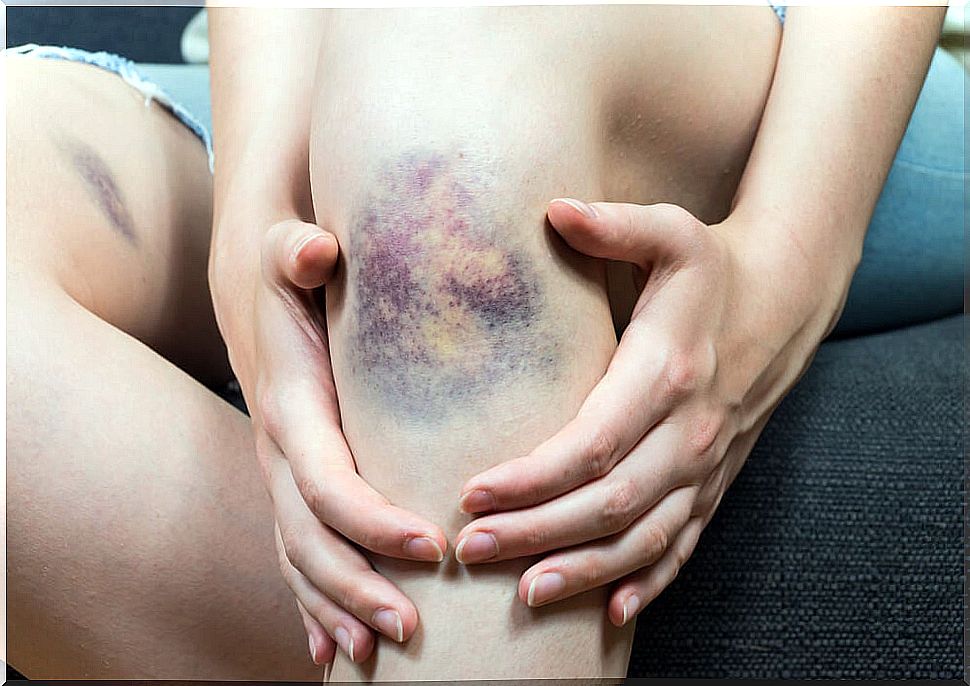Physiology Of Touch
The sense of touch is not only related to the skin. Even so, it is true that it is the largest organ in the body and the most obvious. The skin has about 5 million sensory nerve receptors in the skin. This allows you to experience the sensation of pain and pressure within the body, among others.
When the touch, pain, or heat sensors on your skin are stimulated, they send electrical pulses to your neurons (special cells that transmit electrochemical impulses). Sensory neurons pass along the neuron’s electrical pulse until it reaches the spinal cord. It takes the incoming signal and sends it to the brain. Once the brain receives the signal from the spinal cord, it translates it.
The human brain can combine messages from its sensory receptors. For example, when a warm cotton towel is wrapped around your body after exiting the sauna, it is the pressure and temperature receptors that transmit the sensation of heat. The psychology behind the sense of touch tells a lot more about it.
From the womb
The sense of touch develops before birth, in fact, it is the first sense that develops inside the womb. Babies also rely on their sense of touch to survive outside the womb.
Babies turn their heads to the side when they feel their cheek touch. Likewise, the pressure sensors also let you know that they are safe during a comforting hug.
Skin senses

Temperature
Temperature sensitivity is a sense of the skin that is related to the human need to maintain internal temperature balance or thermal homeostasis. Sensitivity to temperature is important to protect yourself from an intense temperature that can cause damage to the body.
Mechanism
Specialized sensory receptors called thermoreceptors are responsible for temperature sensitivity. These are found in the dermis of the skin. A cold environment results in less blood flow near the surface of the skin. Therefore, the body feels colder. When a person is in a hot environment or when they have a fever, the opposite occurs.
Receiver sites
The most sensitive heat receptors are found in the elbows, nose, and fingertips. Meanwhile, cold receptors are found on the chest, chin, nose, fingers, and upper lip. Therefore, the nose has sensitive receptors for both heat and cold, which is why it is generally the most receptive sense. However, the fingertips are the most sensitive.
Thresholds
Different parts of the body have different levels of sensitivity to temperature; causing their respective thresholds to vary as well. The part of the body that is most sensitive to temperature is the face, especially the cheeks, while the least sensitive are the thighs and calves.
The temperature threshold is the point at which one can tolerate the heat or coldness of a stimulus. In general, as the stimulus lasts longer (temporal sum) or increases (spatial sum), the temperature threshold decreases.
Function
Sensitivity to temperature allows a person to adapt to their environment to maintain the homeostatic balance of the body. When the brain interprets the physical stimulus as “hot,” the brain signals the part of the body in contact to move away from the stimulus. The same response can be observed when the stimulus is perceived as “cold.”
Adaptation
Thermal receptors demonstrate adaptation like the other types of sensory receptors. This can be seen when one hand is placed in hot water and the other hand in cold water.
After a while (depending on an individual’s adaptation time), neither feels hot or cold. The researchers found that human skin has a normal adaptive temperature range, from 29 to 37 ° C.
Touch psychology
As the scientific literature indicates, hugging a loved one can lower blood pressure and make the person feel valued and important. A firm handshake with a friend can create a positive connection, even in a hospital setting.
How you perceive the hug or handshake, along with how the touch receptors receive pressure, is found in the brain.
Basic types of contact that can be experienced
Intimate
Here, the pressure receptors respond to a handshake, a hug, or a kiss. If the person giving you the touch is someone you care about, the person is likely to be comforted. In this sense, the pressure sensors give you the feeling of how difficult the hug is. Also, the brain interprets the nature of touch as relaxing.
Healer or therapeutic
This type of contact is often associated with massage or acupuncture. Sometimes the pressure is gentle and is intended to soothe aching muscles. Other times, the pressure is deep to resolve knots.
Despite the differences in the severity of the pressure, the person is likely to be aware that the result is curative. For this reason the body allows you to relax.
Exploratory or inquisitive
The human being learns about the world through the sense of touch. Many people taste foods, fabrics, or other objects by feeling different textures.
Sometimes it is possible to rely solely on the sense of touch. That is why it is easy for a person to reach into their purse and find a set of keys without looking. This person knows the cold feel of your metal key and the hard and soft feel of your plastic keychain.
Aggressive or painful

Of course, it is known that touch can also amount to pain if the pressure is too much and the intention is wrong. Too firm a handshake can be uncomfortable rather than reassuring. The sense of touch is not only related to your nerve endings undergoing stimulation; the way you interpret the touch is also important.
What is acupuncture?
The origins of acupuncture date back to ancient China. Proponents of the acupuncture prick believe that thanks to it the patient can restore the healthy balance of the body.
It is a useful alternative medicine technique in the treatment of chronic pain. Its principle is the existence of a network of channels in the skin and deeper tissues, with acupuncture points. By clicking on these points, this network of channels modulates the physiology of the body, helping to combat pain.
Its effectiveness has been demonstrated in many clinical trials as a complementary pain treatment. This is demonstrated, for example, by the study carried out by the Pain Clinic of the Reina Sofía University Hospital in Córdoba








